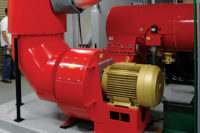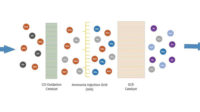Houston’s Harris County has strict ozone regulations, prompted by Texas Commission of Environmental Quality efforts to address the area’s non-attainment status.
Any area that does not meet the national primary or secondary ambient air quality standard for a NAAQS is in an EPA-designated nonattainment area.
But Harris County went from a severe nonattainment area in 2008 to a moderate designation in 2015, thanks in part to these regulatory efforts.
“The TCEQ, the regulating body there, basically said ‘We don’t care how you do it. But we want every facility to reduce their emissions, and NOx emissions specifically, by 80%,” said Steve Sock, Senior Vice president of business development at ClearSign Technologies Corp, speaking at the American Boiler Manufacturers Association (ABMA) Manufacturers Conference in Oak Brook, Illinois.
“So they looked at the annual tons per minute to emit from each facility and gave the facility the ability to choose however they wanted to implement a project so that their aggregate at the end of the period of compliance would reduce their emissions to 80% of what they were,” Sock added, noting the effort was largely successful.
Facilities used the technologies available at the time, the mid-2000s, a combination of ultra-low NOx burners and SCR technologies.
Sock concluded by saying surrounding counties, like the fast-growing Chambers County, are likely to catch up to the regulatory regimen of Harris County eventually.




